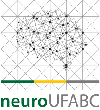Banca de QUALIFICAÇÃO: FELIPE DIEGO TORO HERNÁNDEZ
Uma banca de QUALIFICAÇÃO de MESTRADO foi cadastrada pelo programa.STUDENT : FELIPE DIEGO TORO HERNÁNDEZ
DATE: 18/12/2023
TIME: 09:00
LOCAL: https://conferenciaweb.rnp.br/sala/petermeclaessens
TITLE:
Affective Modulation of Intentional Binding using Linguistic Stimuli: Psychophysics and Neuropsychophysiology
PAGES: 30
BIG AREA: Outra
AREA: Multidisciplinar
SUMMARY:
Intentional binding is the experience of temporal interval compression between voluntary actions and subsequent events when the latter are perceived to be caused on purpose by the agent’s actions, assuming an implicit Sense of Agency (SoA). This effect can be measured in a task in which observers judge the interval between either a voluntary act or an external event, and a later sensory consequence. If the sensory event is understood to be produced by a voluntary act, estimates of the duration in between these tend to be shorter than when it was preceded by another external event. Experimental evidence suggests that this effect might be modulated by the emotional valence of the consequence in that a stronger subjective compression occurs for positive than for negative consequences. However, controversies have arisen over the consistency of the results and the methodology they were obtained with. Some studies failed to fully reproduce the affective modulation of intentional binding or produced contradictory results, calling for an alternative experimental paradigm. In this project, we aimed to search for the affective modulation of intentional binding using a two-alternatives forced-choice (2AFC) task and linguistic stimuli (180 high frequency emotional words-nouns, divided by valence). A pre-experimental survey was made with thirty-two participants (15 F, 17 M, mean age: 24, sd: 4.57, range: 18–32) to capture psycholinguistic variables of interest. There were three main factors in the main experiment: An agency factor (active and passive conditions), an emotional valence factor (neutral, positive, and negative emotional word blocks), and a reference interval variation factor calculated in base of individual values of just noticeable differences (JND), estimated through an interleaved staircase procedure. Subsequently, interval ratios linearly spaced in five levels from -2 JNDs to 2 JNDs above 1 were presented to the participants in the actual experimental session. The emotional valence of word stimuli was blocked. In each sequence, participants had to judge which of both intervals was shorter, with a total of 360 trials. Interval 1 was random between 200-300 ms, and interval 2 (reference interval) was a fraction of the first. GLMM analysis indicated that the slope of the psychometric function was significantly positive (β = .991, +- .11, z = 9.14, p< .001), showing that volunteers properly understood the task. For the same interval ratios, the first interval was judged as shorter more often in the agency condition (β = .139, +- .07, z = 1.98, p< .05), consistent with intentional binding. There was no effect of emotion on intentional binding, since model incorporating valence as factor yielded no statistical significance (χ2 = 3.95, p = .86) indicating no affective modulation. This experiment successfully replicated the intentional binding effect using a 2AFC task with word stimuli. However, we did not find evidence of affective modulation. Dissociation of differential mechanisms of SoA are discussed to better understand results and further directions.
COMMITTEE MEMBERS:
Presidente - Interno ao Programa - 2353089 - KATERINA LUKASOVA
Membro Titular - Examinador(a) Interno ao Programa - 1766041 - MARCELO BUSSOTTI REYES
Membro Titular - Examinador(a) Externo à Instituição - JOSÉ HUGO GONÇALVES MAGALHÃES - UFPE
Membro Suplente - Examinador(a) Interno ao Programa - 1844585 - MARIA TERESA CARTHERY GOULART




